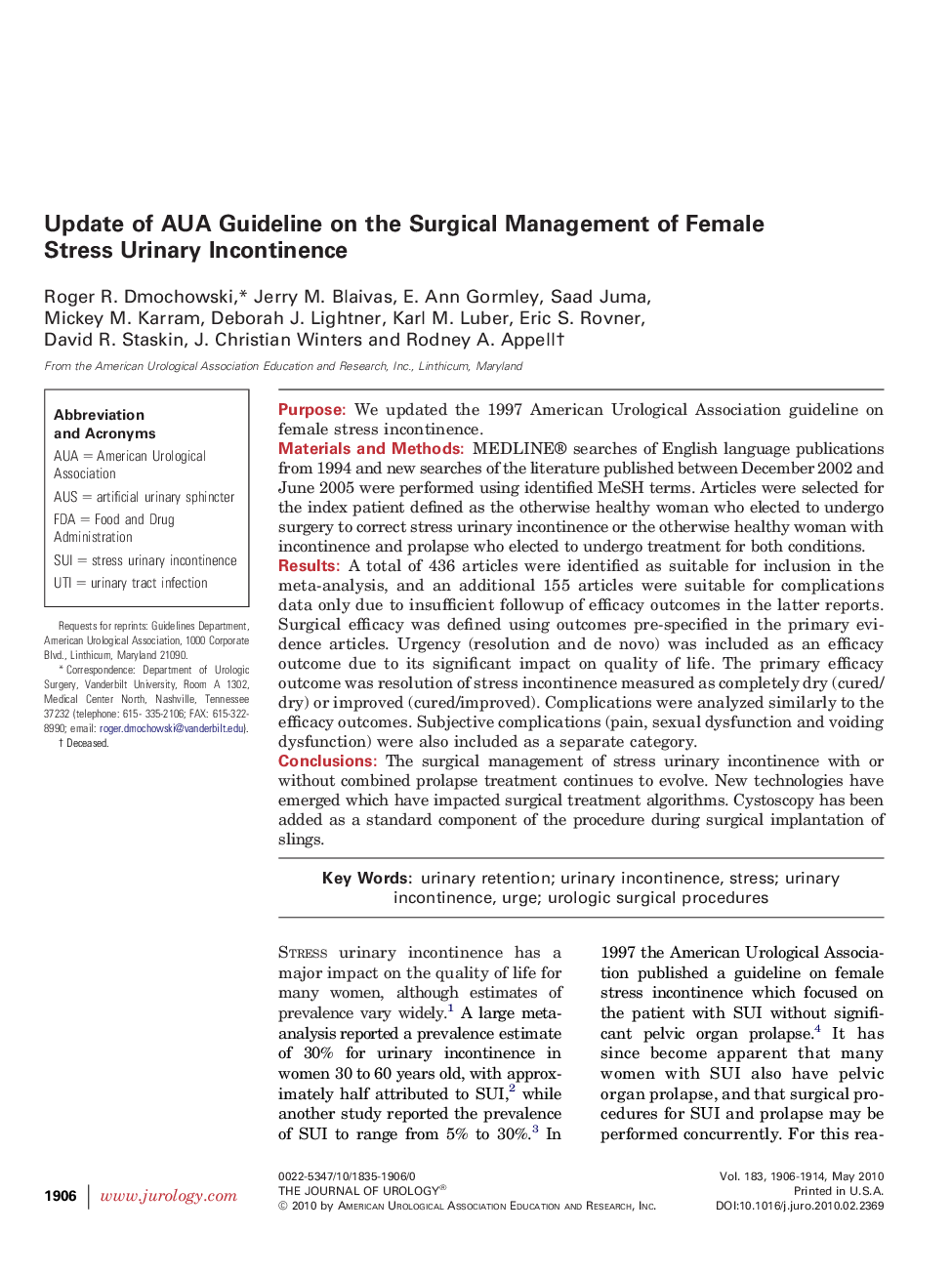| Article ID | Journal | Published Year | Pages | File Type |
|---|---|---|---|---|
| 3866533 | The Journal of Urology | 2010 | 9 Pages |
PurposeWe updated the 1997 American Urological Association guideline on female stress incontinence.Materials and MethodsMEDLINE® searches of English language publications from 1994 and new searches of the literature published between December 2002 and June 2005 were performed using identified MeSH terms. Articles were selected for the index patient defined as the otherwise healthy woman who elected to undergo surgery to correct stress urinary incontinence or the otherwise healthy woman with incontinence and prolapse who elected to undergo treatment for both conditions.ResultsA total of 436 articles were identified as suitable for inclusion in the meta-analysis, and an additional 155 articles were suitable for complications data only due to insufficient followup of efficacy outcomes in the latter reports. Surgical efficacy was defined using outcomes pre-specified in the primary evidence articles. Urgency (resolution and de novo) was included as an efficacy outcome due to its significant impact on quality of life. The primary efficacy outcome was resolution of stress incontinence measured as completely dry (cured/dry) or improved (cured/improved). Complications were analyzed similarly to the efficacy outcomes. Subjective complications (pain, sexual dysfunction and voiding dysfunction) were also included as a separate category.ConclusionsThe surgical management of stress urinary incontinence with or without combined prolapse treatment continues to evolve. New technologies have emerged which have impacted surgical treatment algorithms. Cystoscopy has been added as a standard component of the procedure during surgical implantation of slings.
